This page is dedicated to my grandfather, Sterling Funck (1927 – 2013).
Sterling joined the Calvert’s crew in late October 1942. He remained on the Calvert until August 1944 when he was transferred back to the states for a series of short-term assignments. While aboard the Calvert he participated in amphibious operations spanning the African, European, and Pacific campaigns.
Sterling served as a member of the 2nd Deck Division and a landing craft coxswain of LCVPs, LCMs, and the Captain’s gig during his time aboard the Calvert.
As a landing craft coxswain, Sterling landed US troops to enemy beaches during the following invasions:
- Safi, French Morocco – November, 1942
- Scoglitti, Sicily – July, 1943
- Makin Island, Gilbert Islands – November, 1943
- Roi-Namur, Marshall Islands – February, 1944
- Saipan Island, Mariana Islands – June, 1944
- Tinian Island, Mariana Islands – July, 1944
Sterling’s full WWII story is available as a free book download (.pdf document) here at The Adventures of a Landing Craft Coxswain. This book captures his stories and memories during his service aboard the USS Harry Lee (Jan ’42 – Oct ’42) and the USS Calvert (Oct ’42 – Aug ’44).
If it not been for Sterling’s willingness to share his stories (including his copies of John Cole’s Calversion) I may never have known of the Calvert’s rich history and the ship’s many years of service in the US Navy.
Selected Interviews of Sterling Funck:
Captain Whitfield “Bulldog” (USS Harry Lee, USS Calvert)
Captain Sweeney (USS Calvert)
Cracking the Captain’s Gig (USS Calvert)
Daily Life Aboard the USS Calvert
Transporting German and Japanese Prisoners of War (USS Calvert)
“Running Out of Gas” (USS Harry Lee or USS Calvert)
Throwing the Chaplain’s Boots Overboard (USS Calvert)
Liberty in Norfolk, VA, New York, San Diego, and San Francisco (USS Calvert)
Sterling’s WWII-era Photographs
Additional Background on The Adventures of a Landing Craft Coxswain:
In 1998 I approached Sterling to learn about his experiences during World War II. At that time I had the idea that I might be able to produce a few pages of information that family members would find interesting regarding his role in the War. For various reasons, the project grew in scope beyond my original plans.
The Adventures of a Landing Craft Coxswain book is the result of my grandfather’s willingness to share his stories, the availability of a tremendous amount of published material, as well as the many sources available on the Internet. The document is comprised of three key themes. First and foremost, it provides a record of Sterling’s personal experiences during his wartime service. Second, it sets the context of Sterling’s experiences within the larger operations and battles within which he participated. Third, it traces the evolution of the Navy’s approach and execution of amphibious operations during World War II and describes the impact of these changes on Sterling’s role as a landing craft coxswain aboard an Attack Transport.
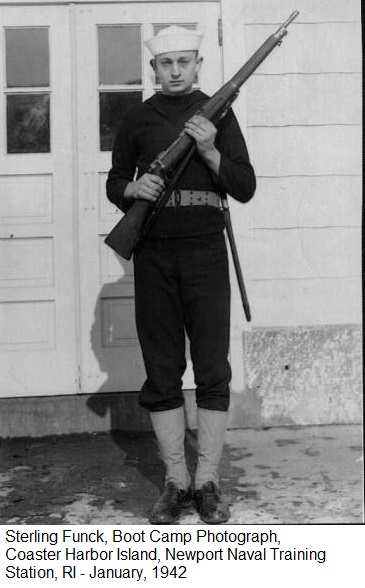
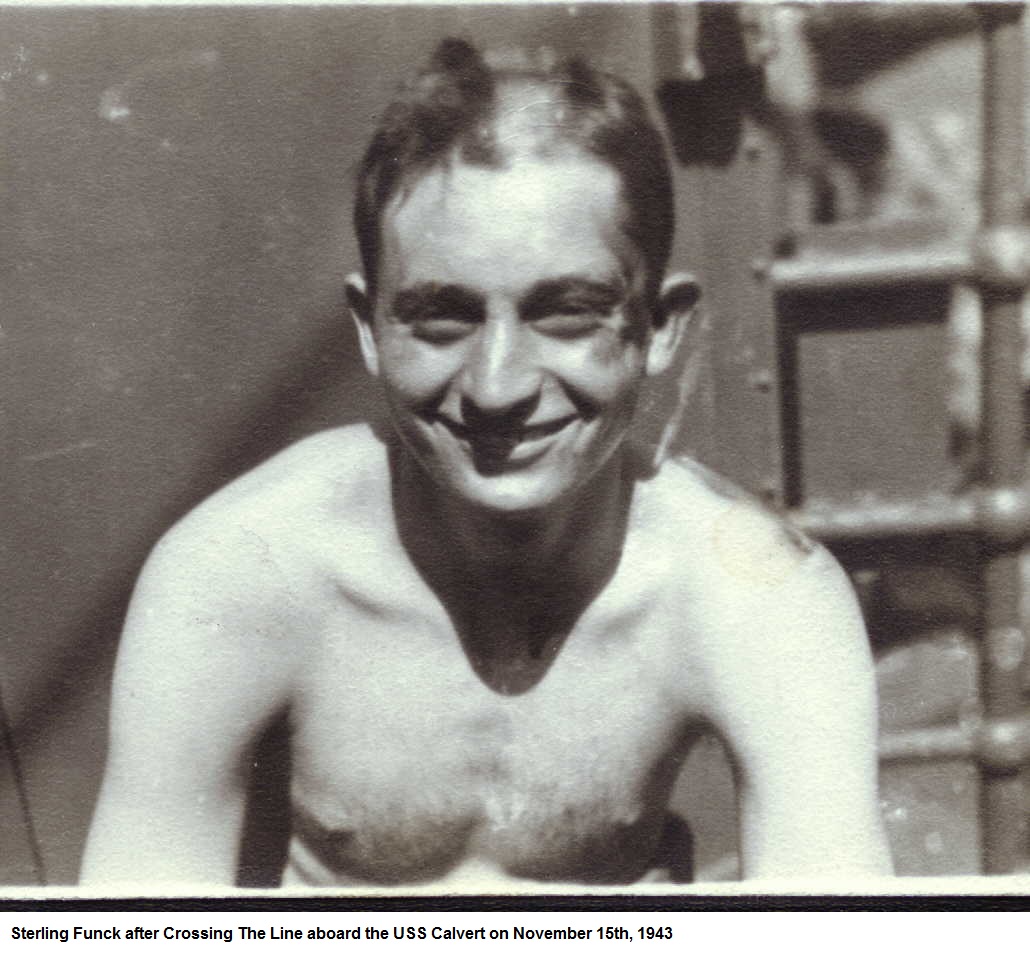
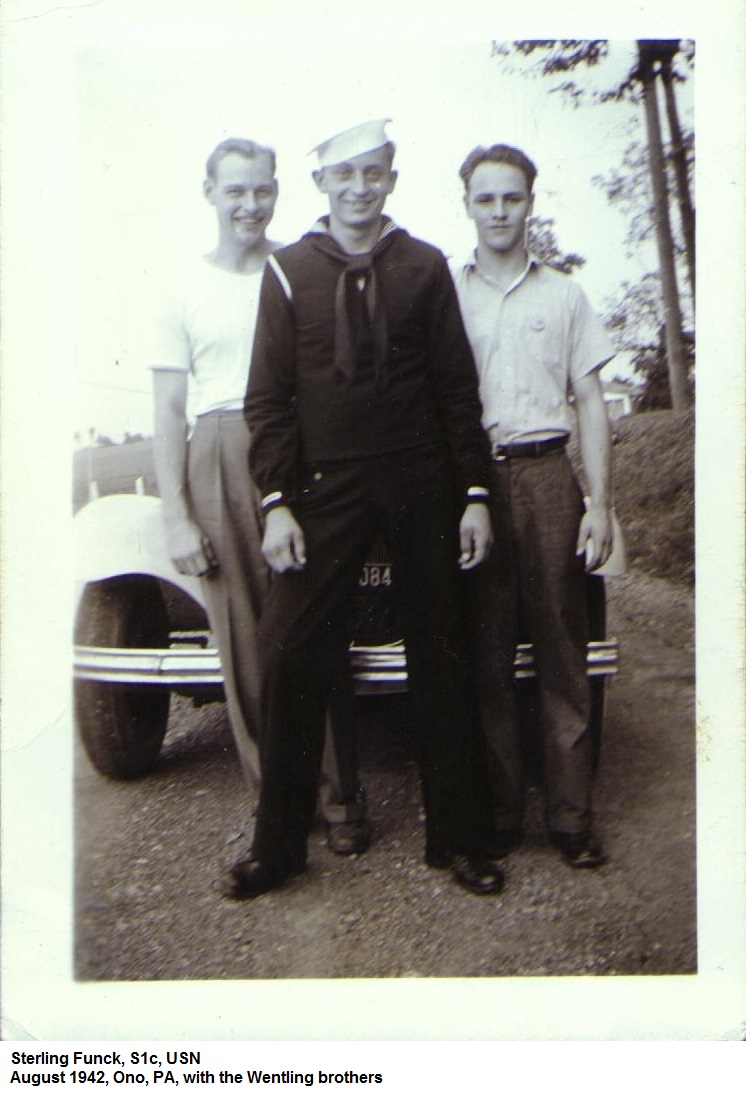
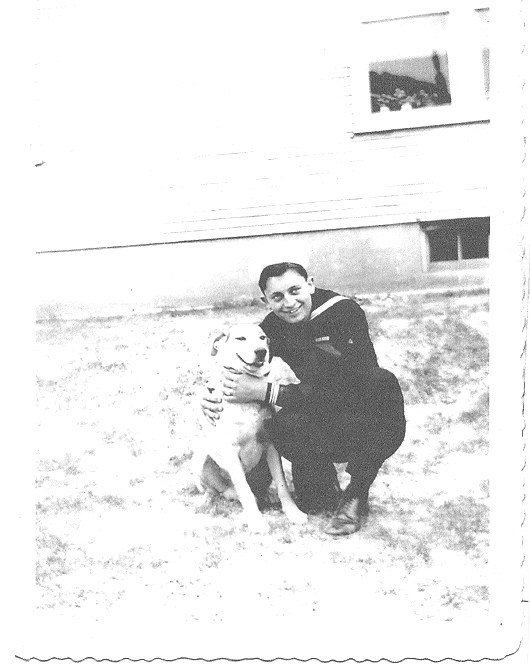
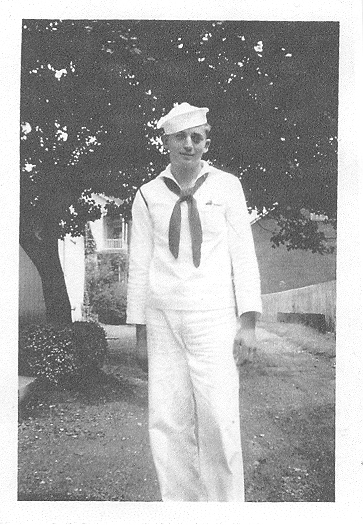
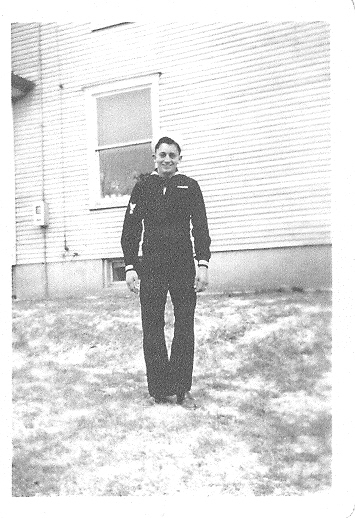

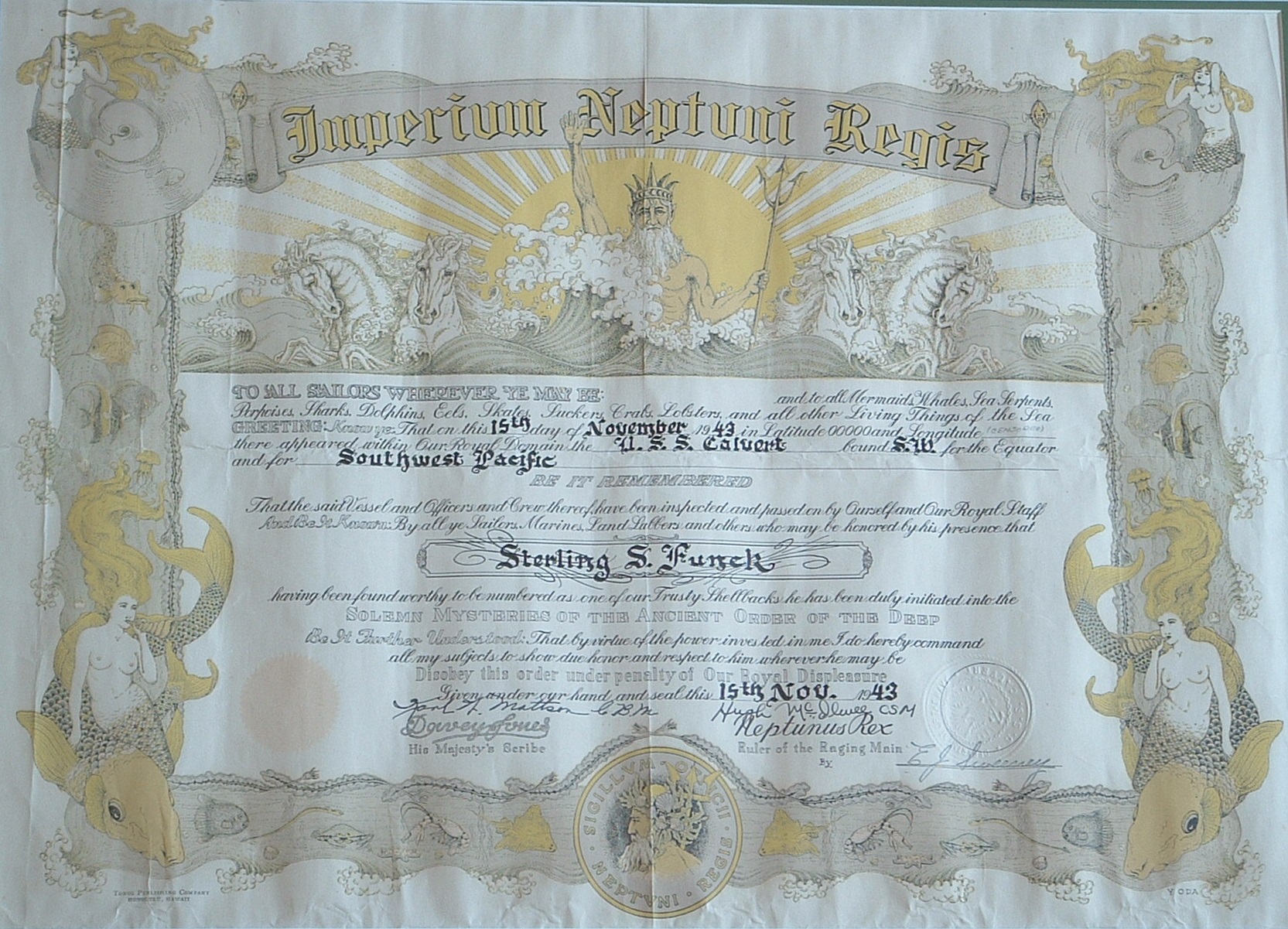
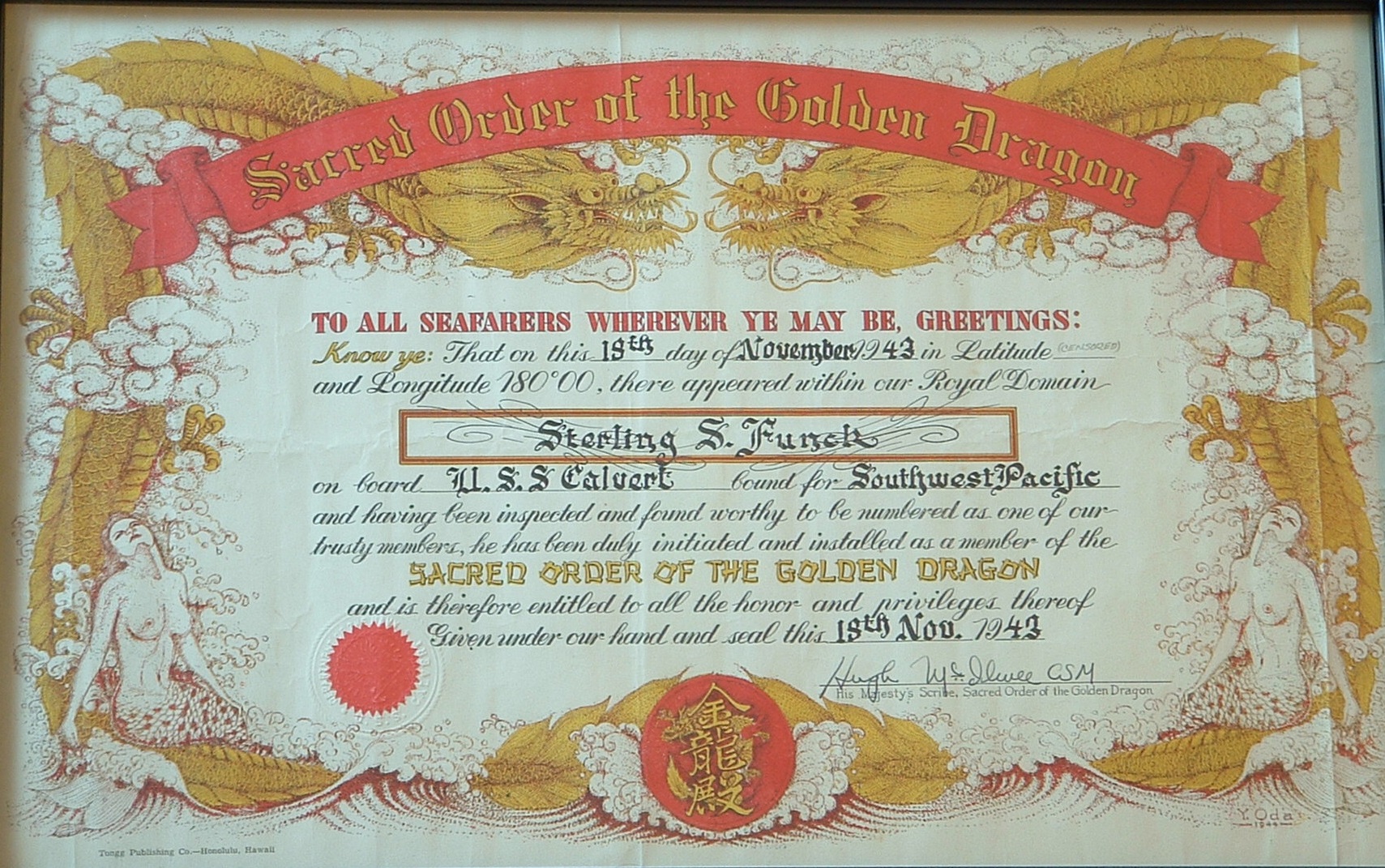
Pingback: Sad to Announce the Death of Sterling Funck (my Grandfather) | USS Calvert (APA-32)
USN 14Aug47 to 7Aug51. On APA-32 Calvert, Aug 1950. She was re-commissioned from moth balled fleet in VA about Sept50. I was an RM3, one of about 20 RM on the ship. Other than 3, RM3s and 1 RM-Striker, all RM were USNR recalled to active duty for Korean War. After passing shake-down cruise, Norfolk, 32 went to San Diego where convoy, TransDiv 13 was formed. “13” consisted of 3 APAs and several LSTs etc. Skipper of the 32 was designated TransDiv 13 commander and 32 flew a One-Star pennant that indicated the 32 was “13” convoy Flag Ship. (Navy doesn’t normally have one-star (Commodore) as the army has one-star Brig Generals). APA-32 captain was Commodore Hurd. Ship also flew a 2-Star army red pennant indicating the 32 had a 2-Star General of the 40th CA NG Inf Div aboard). TransDiv 13 picked up the NG activated CA 40th Inf Div, San Francisco about Dec 1950 and took the Inf Div to Yokohama. APA-32 home-port became, Yokosuka, and “13” attached to TF-90, Far East, Korean War. — Trained “landing operations” with 40th ID, Sendai and Hochinohe early half of 1951. — My landing operations assignment, RM on Smoke-Boat, an LCVP that had a drum of chemicals that when mixed with sea water, produced smoke in front of incoming LCVPs, LCMs and other army troop and equipment transporting craft. — The army Radio checked out ok aboard ship before crawling down side of the 32 on a cargo net into the LCVP, but once away from the ship the radio NEVER worked. Fortunately I had self-taught myself Flashing Light (Morse) and Semaphore signaling during idle time 3 previous years aboard other ships. Using two white hats, I sent messages to the 32 by semaphore using two white hats (didn’t have semaphore flags). Ship responded using Flashing Light. It “worked out” ok. — I had enlisted for only 3 years, but when Korean War began (about June 1950) and only a few weeks remaining until ETS, 13Aug50, Pres Truman extended all military enlistments for One Year beyond ETS due to the War. (I was a very unhappy sailor when “overnight” my ETS became 13Aur51 rather than Aug50! – Discharged Seattle, 7Aur51, not intending to re-enlist in “anything!” – 94 days later enlisted in the army because the navy wouldn’t approve of my request for 2-years shore duty. Critical shortage of RM navy-wide. — Retired army, M/Sgt E8, 1989. Retirement Order reads, 40+ years total military service. (Radio Chief CPO Harry Vogler USNR while on the 32. Harry didn’t realize I was a short-timer until 2 days before scheduled to go to Yokosuka from Sendai for discharge, but submitted me for promotion to RM2. Too late, otherwise I most likely would have re-upped on the 32 had I been RM2 earlier. Good ol’ APA-32 memories, US Army Rtr’d (1989)
Roman, thank you so much for visiting and for sharing this information from your time aboard the Calvert!